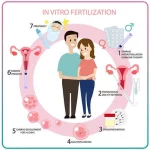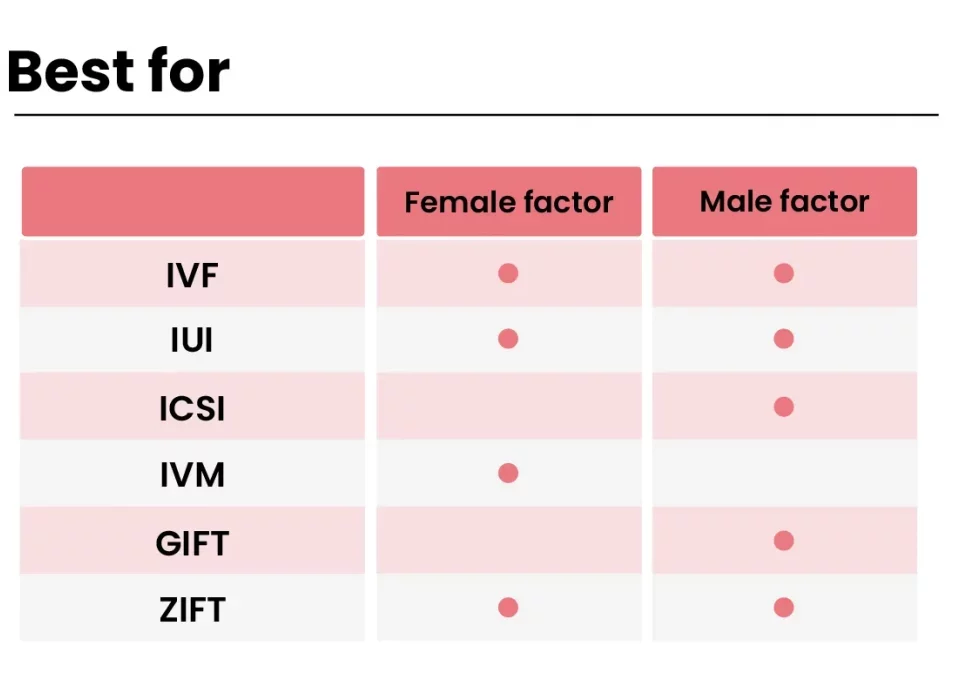
What Is IVF Treatment? Your Complete Guide to In Vitro Fertilization
April 1, 2025
What Does IVF Stand For? Your Ultimate Guide to Understanding In Vitro Fertilization
April 1, 2025Is IVF Covered by Insurance? Your Ultimate Guide to Understanding Coverage

Is IVF Covered by Insurance? Your Ultimate Guide to Understanding Coverage
Starting a family is a dream for many, but for some, it comes with unexpected hurdles—like infertility. If you’ve ever looked into in vitro fertilization (IVF), you know it’s a game-changer for building a family when nature needs a nudge. But here’s the catch: IVF can cost a small fortune, often ranging from $12,000 to $20,000 per cycle in the U.S., and that’s before extras like medications or additional procedures. So, naturally, one big question pops up: Is IVF covered by insurance?
The short answer? It depends. Insurance coverage for IVF is a tricky maze, shaped by where you live, your insurance plan, and even your employer. Some folks get full coverage, others get a little help, and many are left footing the bill themselves. In this guide, we’ll break it all down—plain and simple—so you can figure out where you stand, what to ask, and how to make IVF work for you, with or without insurance. Let’s dive in!
What Does IVF Coverage Actually Mean?
IVF isn’t just one quick procedure—it’s a series of steps, from stimulating your ovaries to transferring an embryo. When we talk about “coverage,” it’s not always all-or-nothing. Insurance might pick up some parts but not others, leaving you to piece it together like a puzzle.
Here’s what IVF typically includes:
- Ovarian stimulation: Medications to help your body produce multiple eggs.
- Egg retrieval: A minor surgery to collect those eggs.
- Fertilization: Combining eggs and sperm in a lab (sometimes with fancy techniques like ICSI).
- Embryo transfer: Placing the embryo into the uterus.
- Extras: Think genetic testing, freezing embryos, or donor eggs/sperm.
Coverage could mean anything from paying for the whole shebang to just covering the meds—or nothing at all. A 2023 study from the Kaiser Family Foundation (KFF) found that only about 25% of Americans with private insurance have some fertility treatment coverage, and even fewer get full IVF support. So, step one? Check what “covered” means for your plan.
Does Your Insurance Plan Cover IVF? Here’s How to Find Out
Not all insurance plans are created equal. Whether you’re on a private plan, employer-sponsored insurance, or something like Medicaid, the rules differ. Let’s walk through the main types and what they might offer.
Employer-Sponsored Plans: A Mixed Bag
If you get insurance through your job, your odds of IVF coverage depend on your employer’s size and generosity. Big companies (think 500+ employees) are more likely to offer fertility benefits—about 56% do, per a 2017 Mercer survey. Smaller businesses? Less so.
But here’s the kicker: even if your employer offers IVF coverage, there might be limits—like a cap on cycles (say, three tries) or a dollar amount (like $15,000 lifetime max). Some plans also require you to try cheaper options first, like intrauterine insemination (IUI).
Action Step: Call your HR rep or dig into your benefits handbook. Ask:
- Does my plan cover IVF?
- What parts of the process are included (meds, procedures, testing)?
- Are there limits on cycles or costs?
Private Insurance: It’s Up to You (and Your State)
Buying your own insurance? Coverage varies wildly. Some states—like New York or California—have laws forcing insurers to cover IVF (more on that later). Outside those states, it’s a free-for-all. Many plans skip fertility treatments altogether, treating them as “optional” rather than essential.
A 2024 NPR report noted that IVF coverage is still “not common” in private plans, even as demand grows. If you’re shopping for a plan, look for ones with fertility riders—add-ons that tack IVF onto your coverage for an extra premium.
Medicaid and Military: Limited Options
Medicaid rarely covers IVF. New York is an exception, offering up to three cycles of fertility drugs, but full IVF? Nope. For military families, TRICARE covers diagnostic tests and fixes for physical infertility causes (like surgery), but IVF is usually out unless it’s tied to a service-related injury. Veterans Affairs (VA) steps up for vets with service-connected infertility, covering IVF since 2017.
Quick Tip: If you’re on Medicaid or TRICARE, double-check with your provider. Rules can shift, especially with new laws popping up.
Where You Live Matters: State Laws and IVF Coverage
Your zip code can make or break your IVF coverage. As of April 2025, 21 states plus Washington, D.C., have laws mandating some form of infertility coverage, according to RESOLVE: The National Infertility Association. But “infertility coverage” doesn’t always mean IVF—here’s the scoop.
States That Cover IVF
- New York: Since 2020, large employers (100+ employees) must cover up to three IVF cycles.
- California: A new 2024 law (signed by Governor Newsom) requires big insurers to cover IVF, including for LGBTQ+ families—a huge win!
- Illinois: Insurers must cover up to four egg retrievals if you’ve been trying to conceive for a year.
These laws often apply to fully insured plans (not self-insured ones, where employers call the shots). A 2023 KFF analysis found that state mandates boost IVF access by 10-15%, but gaps remain—especially for smaller businesses or self-funded plans.
States With No IVF Mandate
Live in Texas or Florida? Tough luck. No state law means it’s up to your insurer or employer. You’re more likely to pay out of pocket unless you’ve got a rare, generous plan.
Interactive Quiz: Does Your State Help?
Answer these quick yes/no questions:
- Do you live in a state with an infertility mandate? (Check RESOLVE’s list!)
- Is your employer self-insured? (Ask HR—it skips state rules.)
- Does your plan mention fertility benefits?
- Mostly “yes”? You’ve got a shot at coverage!
- Mostly “no”? Time to explore other options.
Why Isn’t IVF Covered More Often? The Hidden Reasons
Ever wonder why IVF feels like the redheaded stepchild of insurance? It’s not just random—it’s rooted in history, money, and politics.
It’s Seen as “Optional”
Back in the day, infertility treatments were viewed as luxury extras, not medical must-haves. That stigma lingers. Unlike heart surgery, IVF doesn’t “save lives” in the traditional sense, so insurers often dodge it.
The Price Tag Scares Insurers
One IVF cycle can cost insurers $15,000+, and success isn’t guaranteed—about 50% for women under 35, per the CDC. Multiple cycles jack up the bill fast. Critics (like fiscal conservatives) argue that mandating coverage spikes premiums for everyone, as X posts from 2024 pointed out after California’s new law.
Politics Plays a Role
IVF’s future ties into bigger debates—think abortion rights and embryo status. After Alabama’s 2024 ruling that frozen embryos are “children,” some insurers got jittery about covering IVF. Meanwhile, Democrats push bills like the “Right to IVF Act,” but they’ve hit Republican roadblocks.
Fresh Take: A 2025 X trend showed folks praying for leaders like Elon Musk to tackle healthcare waste. Could innovators like him push for broader IVF access? It’s a long shot, but it’s buzzing online!
How Much Does IVF Cost Without Insurance?
No coverage? Let’s talk numbers. Costs vary by location, clinic, and your needs, but here’s a rough breakdown:
| IVF Step | Average Cost (U.S.) |
|---|---|
| Ovarian stimulation meds | $3,000 – $5,000 |
| Egg retrieval | $5,000 – $7,000 |
| Lab fertilization | $2,000 – $4,000 |
| Embryo transfer | $1,500 – $3,000 |
| Total per cycle | $12,000 – $20,000 |
Extras That Add Up:
- Genetic testing (PGT): $1,000-$3,000
- Embryo freezing: $500-$1,000/year
- Donor eggs: $20,000+
A 2024 NPR piece pegged the average at $20,000+, with many needing 2-3 cycles. That’s $60,000 out of pocket if insurance says “nope.”
What If Insurance Doesn’t Cover IVF? Your Backup Plan
Don’t lose hope—there are ways to make IVF happen, even without insurance. Here’s how real people do it.
Financing Options
- Medical Loans: Companies like Prosper offer loans with 6-12% interest. Monthly payments can stretch costs over years.
- IVF Refund Programs: Clinics like Illume Fertility’s Sunfish program bundle cycles with a partial refund if you don’t conceive.
- Grants: Nonprofits like Baby Quest give $5,000-$15,000 to qualifying families. Apply early—spots fill fast!
Negotiate With Your Clinic
Some clinics offer discounts for cash payments or sliding-scale fees based on income. A friend of mine shaved $2,000 off her bill just by asking. Call around—prices aren’t set in stone.
Crowdfunding Creativity
Sites like GoFundMe have helped families raise thousands. One couple I read about threw a “baby fund bash,” netting $8,000 from friends and local businesses. Get creative!
Checklist: Your IVF Funding Game Plan
✔️ Compare clinic prices in your area.
✔️ Apply for a grant (check RESOLVE’s resource list).
✔️ Talk to your bank about a low-interest loan.
❌ Don’t max out credit cards—high interest bites!

The Emotional Side: Coping With Coverage Gaps
IVF isn’t just a financial hit—it’s an emotional rollercoaster. When insurance says no, the stress piles on. A 2023 study in Fertility and Sterility found that 60% of IVF patients reported anxiety over costs, worse when coverage was denied.
Real Story: Sarah, a 34-year-old teacher from Ohio, told me her insurer covered diagnostics but not IVF. “I felt crushed—like my dream was slipping away. We saved for two years, and it still wasn’t enough.” She joined a support group on Facebook, which hooked her up with a grant.
Coping Tips:
- Join a local or online infertility group—RESOLVE has tons.
- Break costs into chunks—focus on one step at a time.
- Lean on loved ones; even small gestures (like a coffee run) lift spirits.
New Twists: What’s Changing in 2025?
IVF coverage isn’t static—things are shifting fast. Here’s what’s new and what it means for you.
Tech Lowers Costs
Mini-IVF (using fewer meds) and at-home monitoring kits are slashing prices. A 2024 Journal of Assisted Reproduction study showed mini-IVF costs 30% less, with similar success rates for some patients. Ask your doc if it’s an option!
Employer Perks Are Growing
Big names like Google and Starbucks now offer IVF benefits—up to $25,000 in some cases. A 2025 KFF survey hints more mid-sized firms might follow, especially in tight job markets. Check if your company’s jumping on board.
Federal Push (Maybe?)
The “Right to IVF Act” keeps circling Congress. If it passes, private insurers might have to cover IVF nationwide. No guarantees—it’s stalled twice—but it’s worth watching.
Poll: What’s Your IVF Dream?
- A) Full insurance coverage
- B) Lower treatment costs
- C) More grants and support
Drop your pick in your head—or share with a friend!
IVF Around the World: A Quick Peek
Curious how the U.S. stacks up? Other countries handle IVF differently:
- France: Free IVF for women under 43, up to four cycles.
- Israel: Unlimited IVF until you have two kids—fully funded!
- India: Out-of-pocket costs average $1,000-$3,000 per cycle, but insurance rarely covers it.
The U.S. lags in universal coverage, but state laws and employer trends are narrowing the gap—slowly.
Your Next Steps: Making IVF Work for You
So, is IVF covered by insurance? Maybe, maybe not—but you’ve got options. Start here:
- Call Your Insurer: Get the nitty-gritty on your plan.
- Research State Laws: See if your state’s got your back.
- Explore Alternatives: Loans, grants, or clinic deals can bridge the gap.
- Build a Support Net: Friends, groups, or even a good playlist can keep you sane.
IVF’s a big deal—financially and emotionally—but it’s not impossible. You’re not alone, and with a little digging, you might find a path that fits. Got a story or tip? Share it with someone—it might just spark their hope too!

